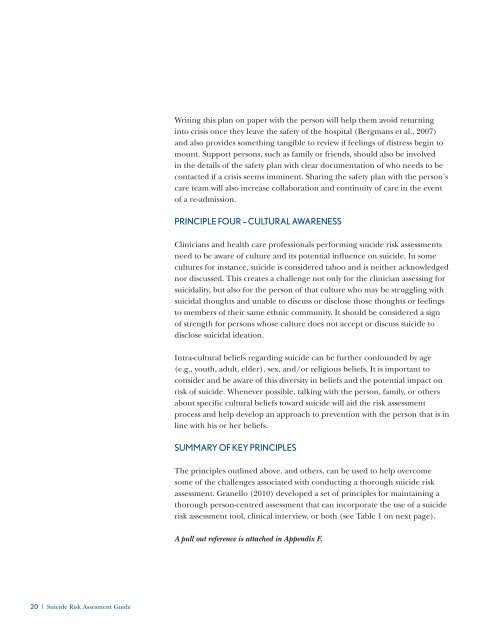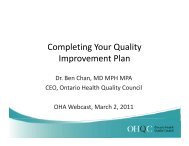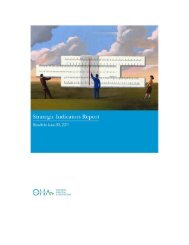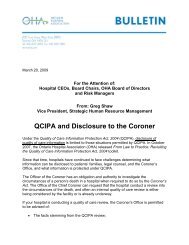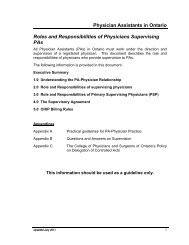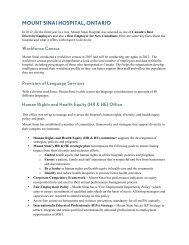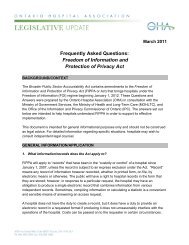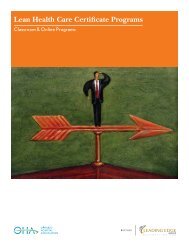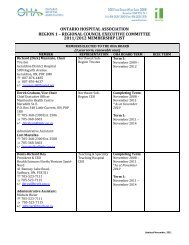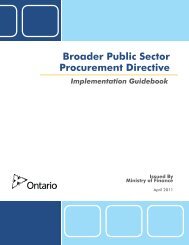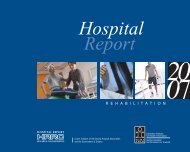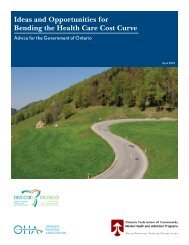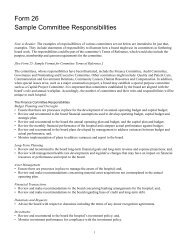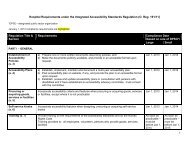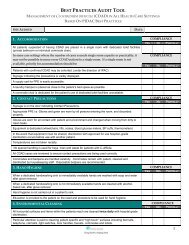Suicide Risk Assessment Guide - Ontario Hospital Association
Suicide Risk Assessment Guide - Ontario Hospital Association
Suicide Risk Assessment Guide - Ontario Hospital Association
You also want an ePaper? Increase the reach of your titles
YUMPU automatically turns print PDFs into web optimized ePapers that Google loves.
20 I <strong>Suicide</strong> <strong>Risk</strong> Assesment <strong>Guide</strong><br />
Writing this plan on paper with the person will help them avoid returning<br />
into crisis once they leave the safety of the hospital (Bergmans et al., 2007)<br />
and also provides something tangible to review if feelings of distress begin to<br />
mount. Support persons, such as family or friends, should also be involved<br />
in the details of the safety plan with clear documentation of who needs to be<br />
contacted if a crisis seems imminent. Sharing the safety plan with the person’s<br />
care team will also increase collaboration and continuity of care in the event<br />
of a re-admission.<br />
PRINCIPLE FOUR – CULTURAL AWARENESS<br />
Clinicians and health care professionals performing suicide risk assessments<br />
need to be aware of culture and its potential influence on suicide. In some<br />
cultures for instance, suicide is considered taboo and is neither acknowledged<br />
nor discussed. This creates a challenge not only for the clinician assessing for<br />
suicidality, but also for the person of that culture who may be struggling with<br />
suicidal thoughts and unable to discuss or disclose those thoughts or feelings<br />
to members of their same ethnic community. It should be considered a sign<br />
of strength for persons whose culture does not accept or discuss suicide to<br />
disclose suicidal ideation.<br />
Intra-cultural beliefs regarding suicide can be further confounded by age<br />
(e.g., youth, adult, elder), sex, and/or religious beliefs. It is important to<br />
consider and be aware of this diversity in beliefs and the potential impact on<br />
risk of suicide. Whenever possible, talking with the person, family, or others<br />
about specific cultural beliefs toward suicide will aid the risk assessment<br />
process and help develop an approach to prevention with the person that is in<br />
line with his or her beliefs.<br />
SUMMARY OF KEY PRINCIPLES<br />
The principles outlined above, and others, can be used to help overcome<br />
some of the challenges associated with conducting a thorough suicide risk<br />
assessment. Granello (2010) developed a set of principles for maintaining a<br />
thorough person-centred assessment that can incorporate the use of a suicide<br />
risk assessment tool, clinical interview, or both (see Table 1 on next page).<br />
A pull out reference is attached in Appendix F.


